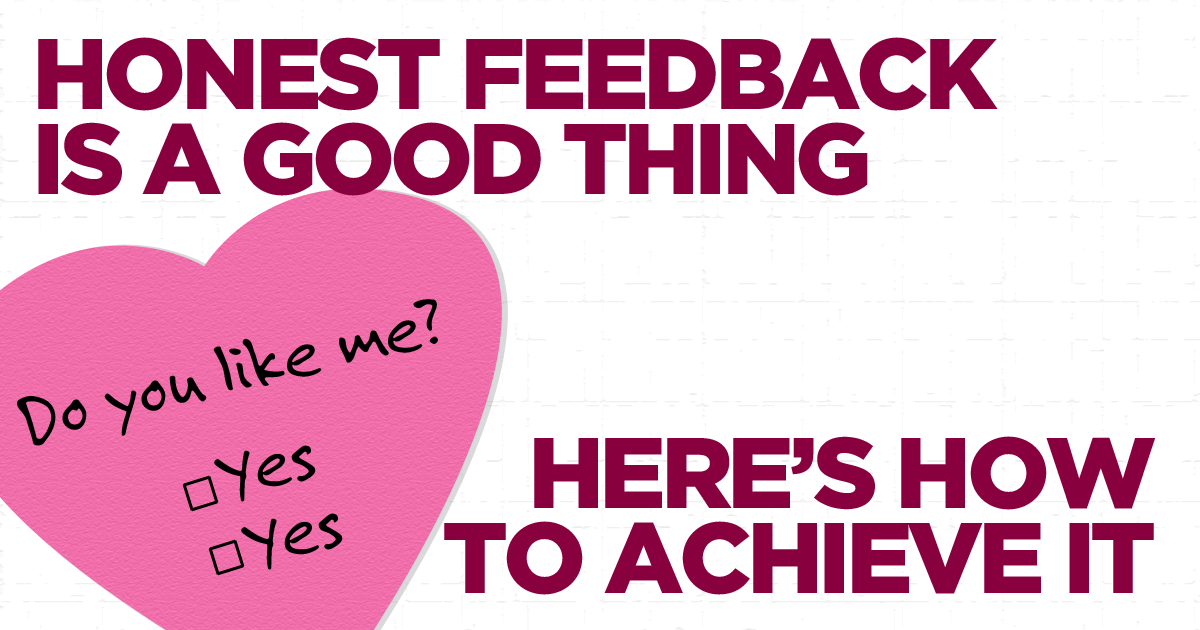
For Valentine’s Day one year, a young member of our family made a valentine for a boy in her class. She spent a lot of time making sure it was pretty enough and that she said exactly what she wanted to say. When she was finished, she was so proud that she showed the whole family. Inside she had written, “Do you like me?” Below that were two checkboxes: “Yes” and “Yes.”
While that’s a pretty funny (and cute) story, it also reminds me of how some companies view feedback. These alleged feedback surveys are filled with biased questions, leading the user to give answers the company wants to hear.
But that’s not how feedback is supposed to work. Feedback is an opportunity for respondents, anonymous or not, to give you their point of view of how the project went. Believe it or not, you actually want honest feedback. You want the opportunity to apologize for a poor experience, ask for a referral from a loyal client, and learn from past mistakes. Honest feedback is important as you grow your business. Check out these steps on how to achieve honest feedback after a project has wrapped, a service has been paid for, or a product has been sent.
Ask Neutral Questions
When developing questions for a feedback survey, don’t have the questions try to influence the survey-taker. It’s easy to create biased questions like “How good of a job did you think we did?” instead of allowing for both positive and negative reactions with a more neutral question like, “How do you think the project went?”
Mix It Up
It’s okay to have a mix of multiple choice and open-ended buy diazepam europe questions. This allows you to have quantitative data (from the multiple choice answers) as well as qualitative and anecdotal data (from the open-ended questions). Open-ended questions also allow for customers and clients to share their point of view more easily than just answering a handful of multiple choice questions.
Keep It Simple
Develop questions that are simple to read, easy to understand, and quick to answer. No matter what the combination of multiple choice and open-ended questions, the survey should be short and sweet. The survey-taker should know exactly what you’re asking and be able to complete the survey in about five minutes.
Ask Scary Questions
It’s okay to ask questions that scare you to know the answer. Ask where your weaknesses are, see what people think are your strengths. Don’t assume you know the answer to any question—that’s why you need the survey. It’s so easy to get caught up in how you think your company or business is being portrayed that you don’t actually bother to ask.
Send the Survey in the First Place
You can’t get honest feedback without putting the survey out for people to take. Once you’ve written your questions, publish the survey with Formstack or SurveyMonkey, then add a link to the bottom of a transactional email or include it as part of a project wrap-up email.
Asking unbiased questions will allow your customers and clients to give you honest feedback. In turn, listen to what they have to say, learn where you can improve and know what you’re doing well, and make a plan to improve your reputation.
Need help with getting honest feedback? {{cta(‘f17628ce-1628-4213-aeaa-ff1d667600ba’)}}
